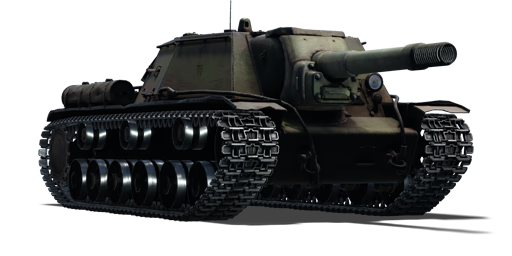



The SU-152 is a Soviet self-propelled heavy howitzer used during World War II. Operation Uranus, the counteroffensive against Stalingrad, revealed how desperately the Soviet Army needed mobile heavy firepower to destroy German fortifications. The Soviet front-line ground forces lacked the firepower to destroy pillboxes and other fortifications. During this period, most Soviet howitzers and heavy guns were towed rather than self-propelled. Since towed guns were frequently pulled by horses or their crews, they were susceptible to counterattacks while travelling. The development of the SU-152 began when Soviet engineers installed a 152 mm ML-20S howitzer on a KV-1S heavy tank chassis. It was dubbed Zveroboy, which translates to "beast slayer", due to its impromptu role as a heavy tank destroyer that could take out heavy German armoured vehicles.
Introduced in the Closed Beta Test for Ground Forces before Update 1.41, the SU-152 is a tank destroyer that can serve many different purposes. Since most of the enemy at this point is heavily armoured, armour-piercing shells are the recommended ammunition of choice for engagement. However, in combat, high-explosive shells remain a viable option, particularly when targeting lightly armoured vehicles. However, as this vehicle takes a very long time to reload, players must make sure every shot counts.
| Ammunition | Type | Armor penetration (mm) at a distance: | |||||
|---|---|---|---|---|---|---|---|
| 10 m | 100 m | 500 m | 1000 m | 1500 m | 2000 m | ||
| APHE | 170 | 169 | 161 | 152 | 144 | 136 | |
| HE | 49 | 49 | 49 | 49 | 49 | 49 | |
| APHEBC | 171 | 169 | 160 | 150 | 141 | 133 | |












Mobility | |
|---|---|
Protection |
|---|
Firepower | |
|---|---|